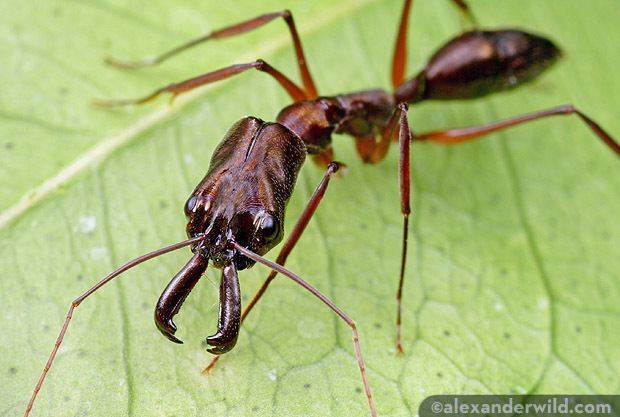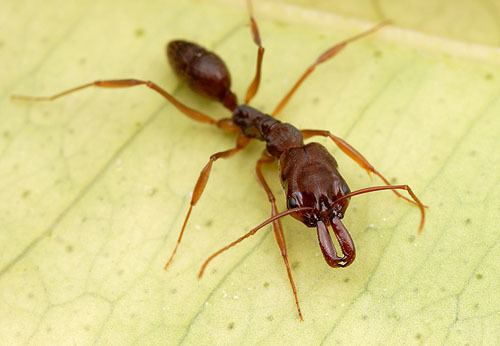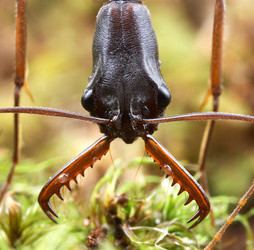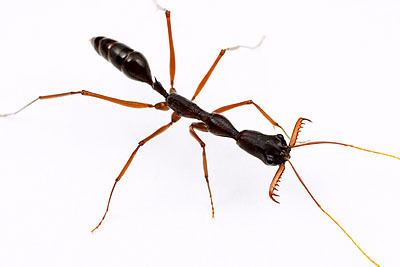Subfamily Ponerinae Scientific name Odontomachus Order Hymenopterans | Family Formicidae Tribe Ponerini Higher classification Ponerini Rank Genus | |
 | ||
Lower classifications Odontomachus bauri, Odontomachus brunneus | ||
Ant farm update cool ants in hybrid nests odontomachus diacamma pogonomyrmex formica
Odontomachus, or trap-jaw ants, is a genus of carnivorous ants found in the tropics and subtropics throughout the world.
Contents
- Ant farm update cool ants in hybrid nests odontomachus diacamma pogonomyrmex formica
- Odontomachus the trap jaw ant
- Overview
- Speed record
- Mimicry
- Distribution
- References

Odontomachus the trap jaw ant
Overview

Commonly known as trap-jaw ants, species in Odontomachus have a pair of large, straight mandibles capable of opening 180 degrees. These jaws are locked in place by an internal mechanism, and can snap shut on prey or objects when sensory hairs on the inside of the mandibles are touched. The mandibles are powerful and fast, giving the ant its common name. The mandibles either kill or maim the prey, allowing the ant to bring it back to the nest. Odontomachus can simply lock and snap its jaws again if one bite is not enough, or to cut off bits of larger food. The mandibles also permit slow and fine movements for other tasks such as nest building and care of larvae.
Speed record

Trap-jaw ants of this genus have the fastest moving predatory appendages within the animal kingdom. One study of Odontomachus bauri recorded peak speeds of between 126–230 kilometres per hour (78–143 mph), with the jaws closing within just 130 microseconds on average. The peak force exerted was in the order of 300 times the body weight of the ant and acceleration of 1 000 000 m/s² or 100 000 g. The ants were also observed to use their jaws as a catapult to eject intruders or fling themselves backwards to escape a threat.
Mimicry
The jumping spider genus Enoplomischus seems to mimic this ant genus.
Distribution
Odontomachus species are found in Central to South America, Asia, Australia, and Africa.

In the United States, Odontomachus haematodus was "recorded in Alabama back in 1956. But now researchers have officially confirmed that the species has spread across the Gulf Coast, at least as far east as Pensacola, Florida." In the past, "Odontomachus ruginodis was thought to be confined to the Orlando region"; however, Magdalena Sorger, a PhD candidate at North Carolina State University, "has confirmed a record of ruginodis more than a hundred miles north of Orlando, in Gainesville, Florida." Odontomachus relictus, however, is only found in "endangered scrub habitat on central Florida’s ancient sand ridges."
